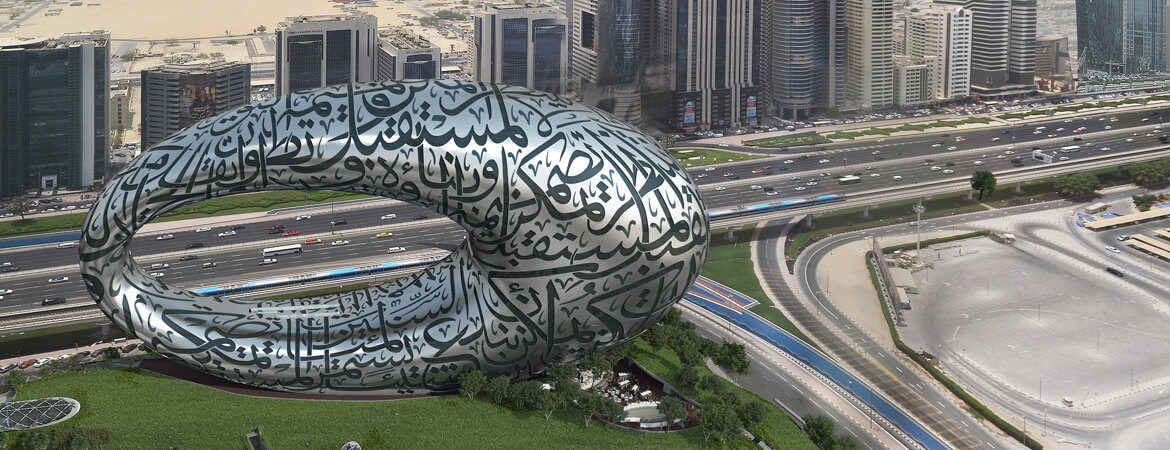Bam International, a subsidiary of the Royal Bam Group, which operates in 30 countries across the globe, is renowned for its ability to create sustainably built environments that enhance people’s lives and create maximum value for stakeholders.
BAM’s diverse expertise allows it to maintain a 50/50 ratio of marine and building projects; a strategy that has a positive effect on stability. In both sectors, BAM has evolved into a company that can handle a great deal of complexity, not only in terms of technical challenges but also the logistical aspects. Moreover, employing a large number of experienced staff from diverse cultural backgrounds, it is proud of its ability to offer the latest in digital construction technology.
It is true, though, that business isn’t always easy in the GCC, as many companies and organisations still prefer to award contracts based on pricing, and with fluctuations in oil and commodity prices, governments are also looking to cut expenditure on construction projects. As a result, 2019 looks challenging, but with current ongoing projects and tenders in the pipeline BAM is confident it is going to achieve its target for this year.
The Museum of the Future
Reliable performance is one of the main reasons many clients consider BAM as the construction company of choice for their projects. This is certainly true regarding a particularly prestigious project at the present time – the Museum of the Future.
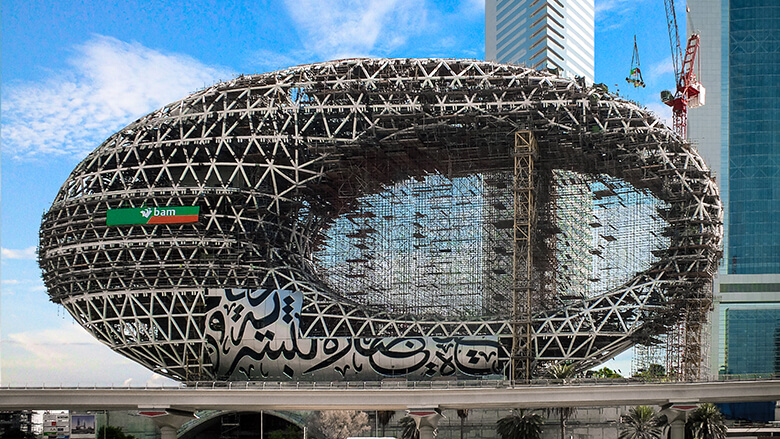
BAM’s scope of works on this project revolves around the execution of the entire substructure and superstructure, from pile cap level through to the submerged basement levels, and all the way up to the iconic stainless steel clad elongated torus-shaped diagrid superstructure.
BAM are contracted to carry out all the MEP and fit-out works to the communal arteries of the building, along with the auditorium, the car parks, the main podium reception area, all internal and external elevators, and all hard and soft external landscaping. The company is also executing all of the external façades along with the internal lining, ceilings, and terrazzo flooring to all of the exhibition levels. It’s effectively a turnkey operation to allow the end-user to move in, install exhibitions, and open the building to the public.
Naturally, as with any project of this size and scope, there have been numerous challenges on the Museum of the Future, right from the commencement. All of the main entrances have elliptical shaped openings, which required specialist formwork and design for concrete casting. The ring beam, which is the foundation of the diagrid structure, was the first contractual measurable milestone on the project and was cast monolithically over a 12 hours period. MEP is another massively challenging package, but with the use of its on-site BIM team operating to LOD 500 international standards, co-ordination of services on one of the world’s most geometrically and structurally challenging projects is somewhat alleviated. The main façade is also hugely challenging. There are over 1,000 bespoke panels making up the superstructure, ranging in length from 9m to 18m. Panels come to site 100% completed, but the integrated glazing, along with individual detailing to every other bespoke interface, ensure complacency is never experienced.
There is no doubt that the Museum of the Future is an engineering marvel. Erecting a near 5,000 tonne diagrid on its own is, for instance, immensely challenging, but when one intentionally distorts it elliptically and introduces a 70m void in the centre to make it ‘torus-like’ in shape it pushes the envelope of conventional engineering to the limit. Add to this the urban setting, with tight site confines and the proximity of the metro line, and you get a better insight into the challenges faced.
It will come as no surprise, therefore, that the very latest in innovative technology is being used throughout the project. Robotic total stations are being utilised for mechanical and electrical elemental setting out, and this is being corroborated with 3D laser scanners for all services. Building Information Modelling (BIM) is being used by all subcontractors on site to LOD 500 and being fed into a federated model daily. Digital construction is at the forefront of everything BAM undertakes on-site to ensure maximum efficiency levels and minimum wastage on what is a LEED Platinum precertified project. Reconfigurable mould systems are being used for internal wall lining panels, meaning double curvature can be achieved on reusable beds, all to very high tolerances.
Sustainable Construction
Another high profile project currently been carried out by BAM is Yas Arena, which the company began in the 1st Quarter of 2017 and is scheduled to be completed this year. With the completion of this state-of-the-art complex, sporting events and all kinds of entertainment will soon find a new home at Yas Arena, an 18,000 seater stadium on the waterfront in Abu Dhabi’s prime leisure centre,Yas Island.
Designed in a way that allows it to host a wide variety of events, from tennis tournaments to wrestling matches, in a temperature controlled environment, Yas Arena has sustainability at its heart. This is being achieved through a range of smart solutions, such as shading features that allow daylight in while protecting from the fierce heat. Choosing the right building materials, appliances and water management systems in the design and construction is key to the Arena’s energy performance. Thanks to efficient building systems and architectural approaches, it is estimated that up to a quarter of the total water and energy usually used in these types of venues can be saved.
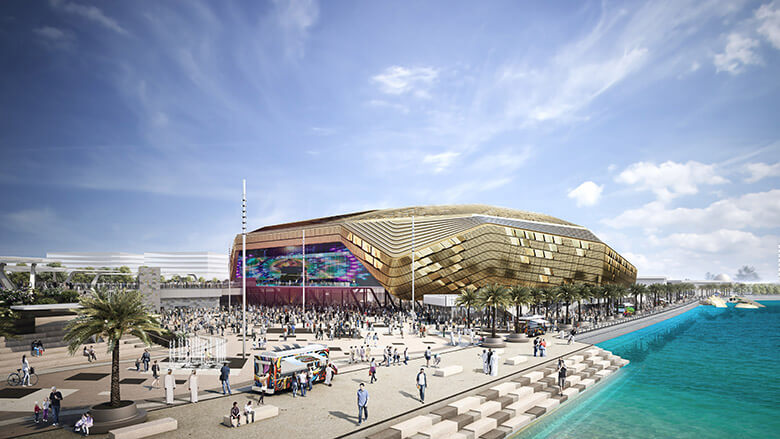
Expertise in the Marine Sector
BAM has a vision of ‘Building the Present, Creating the Future’, and when it comes to work the company undertakes selective projects that are iconic and challenging in nature. Both the Museum of the Future in Dubai and Yas Arena in Abu Dhabi are going to be a landmarks in their respective regions.
With regard to marine projects, BAM is currently working on the Saqr Port expansion phase 1 and 2 in Ras Al Khaimah, which is scheduled for completion in March 2019. BAM’s main scope of works for this project comprises dredging work, construction of a 720-metre long deep water quay wall, as well as stripping an existing breakwater. Reclamation works,topsides furniture, paving, drainage and lighting are also included in the contract. The main challenge for this project is its location, as it is not protected by any breakwater and therefore leaves the location exposed to the weather/waves.
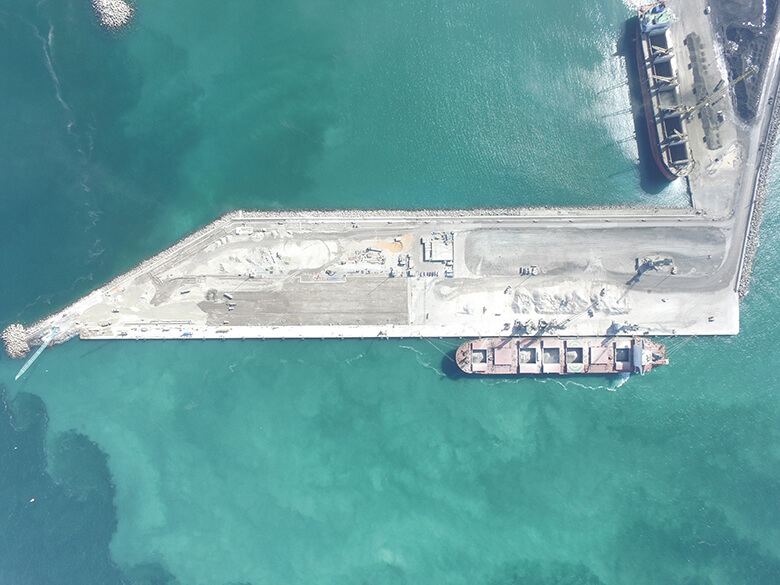
BAM is also involved in the design and construction of the CT4 Connection project at Jebel Ali Port, Dubai, consisting of a contract to deliver a road connection between the newly constructed Container Terminal 4 and the existing road network. The project includes the design and construction of 2.75 km of dual-carriageway with one roundabout and two bridges crossing the existing gas utility corridor. The works include associated drainage, lighting, signage including gantry signs, road markings, and precast barriers.
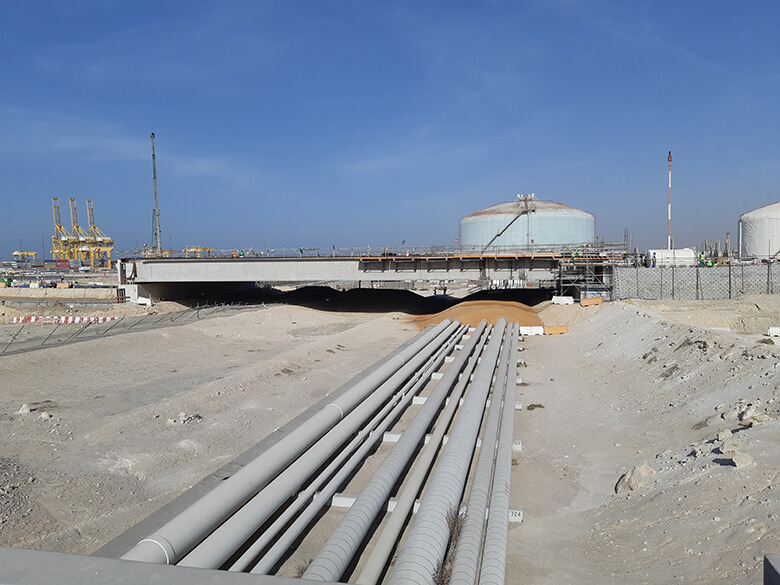
The project will form the first step in a much larger infrastructure upgrade DP World plans to implement in Jebel Ali Free Zone. The main challenge for this project is a bridge with a span of 54 metres using the largest AASHTO girders ever produced in the Emirates. The bridge spans a service corridor with high voltage power cables and several fuel pipelines that require a completed NOC process and an excellent control of construction methods.
Other marine projects recently completed by BAM in the UAE take in:
Jebel Ali Terminal 4, Phase 1a, 1b & 2 – Dubai, UAE.
The design and construction of 2240
Port of Hamriyah
This includes the construction of an
Al Dabbiya phase 3 in Abu Dhabi
Marine infrastructure works for phase 3 of this project for ADCO. The scope of works for five offshore clusters comprised channel dredging, reclamation works, construction of a causeway, shore protection, heliport, pontoons
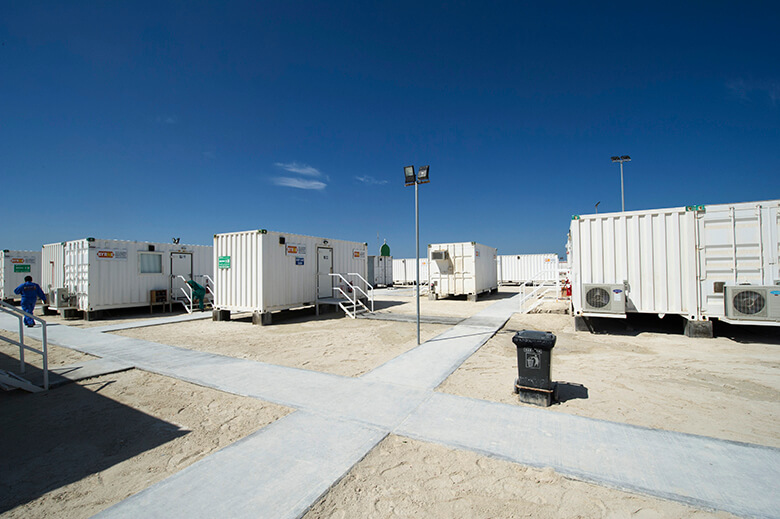
AL DABBIYA PHASE 3 IN ABU DHABI 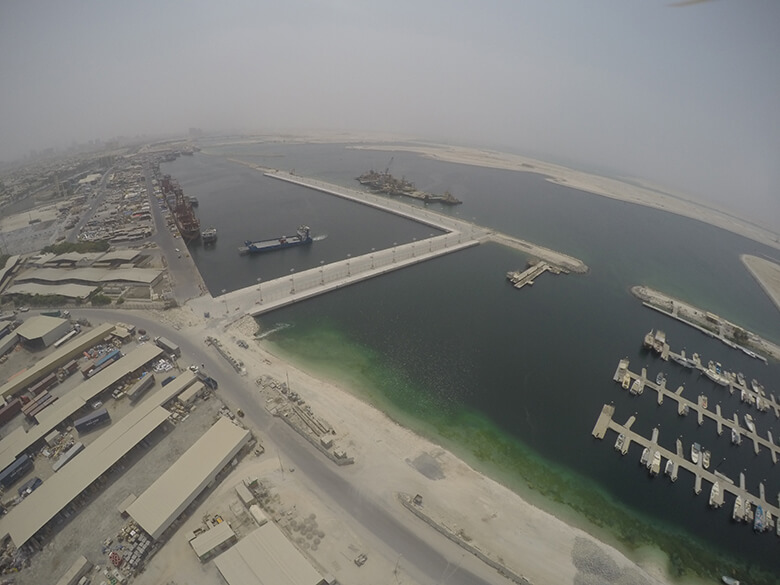
PORT OF HAMRIYAH, DUBAI 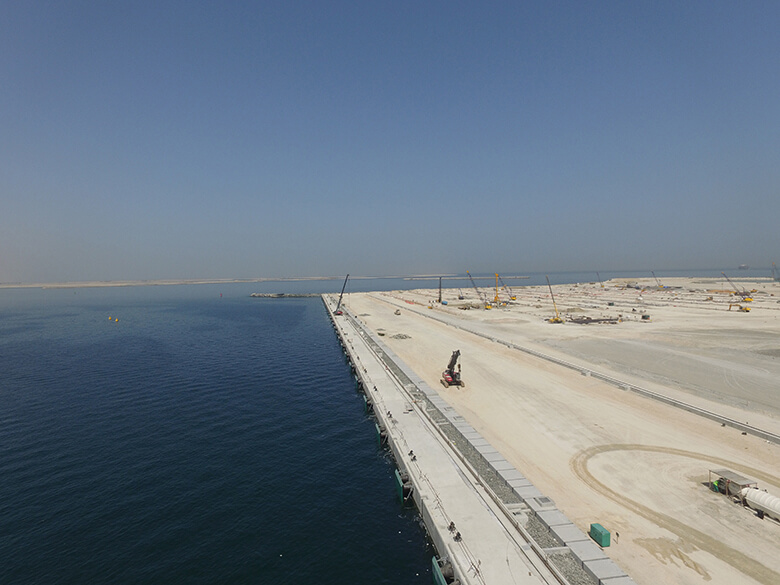
JEBEL ALI TERMINAL 4, PHASE 1A, 1B & 2, DUBAI
Focused on the Client
BAM’s major expertise in building projects covers stadiums and arenas, hotels and offices, hospitals, high-rise buildings, mixed-use developments, and infrastructure. Its expertise in marine projects incorprates harbours, quay walls, jetties, breakwaters and shore protection, intake and outfall. Offering both construct only and design and construct, the company executes these projects with its own equipment and dedicated staff, guaranteeing a smooth and timely delivery.
Whatever the challenge, BAM emphasises the importance of advanced construction techniques, a highly qualified management and staff, and a flexible organisation, enabling close co-operation with both associated and local experts. Put simply, it is committed to delivering projects that meet clients’ requirements in a pro-active, professional, and cost-effective manner.
BAM INTERNATIONAL
P.O. BOX 25685
DUBAI
UAE
T: +971 4 3927277
E: INFO@BAM.COM
W: WWW. BAMINTERNATIONAL.COM
